| 
Had
the Fates been a little kinder to his earliest
aspirations, Jerry Trimboli, a slugging outfielder,
would have had a better opportunity of landing
a slot on the Phillies or Cincinnati Reds.
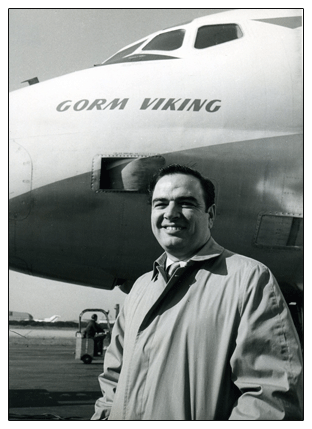 But despite visions
of baseball glory (and fat checks), the Vergilian
counsel that the Fates would lay down the right
path to the future held true to Trimboli’s
career. Destiny is unshakeable. Thus, in time,
he was to exchange a bat and glove for a highly
visible role in the booming new international
air cargo industry. His was a calm, consistent,
well-reasoned industry voice, not always in
step with IATA ideology.
But despite visions
of baseball glory (and fat checks), the Vergilian
counsel that the Fates would lay down the right
path to the future held true to Trimboli’s
career. Destiny is unshakeable. Thus, in time,
he was to exchange a bat and glove for a highly
visible role in the booming new international
air cargo industry. His was a calm, consistent,
well-reasoned industry voice, not always in
step with IATA ideology.
Even now, after
years of retirement, he is inclined to regard
the air cargo process as considerably more than
a static job. There is a route to professionalization
which combines elements of experience, knowledge,
relationships, and reputation. The path traveled
toward authentic professionalization is not
much different in the air freight forwarder
industry, he added, but overseas the process
starts with careful internships. He is solidly
in support of this procedure, especially in
the current, more complex business/service environment.
As the industry
has grown and matured, so have the requirements
that go into the making of a finished air freight
executive. The carriers and intermediaries have
gone substantially beyond “the age of
overtakers,” Trimboli stated. “What
is sought today—in addition to the job,
of course—are a good educational background,
fluency in one or two foreign languages, people
skills, and awareness of the relationship of
world economy and world air cargo.”
Asked whether
he found marked differences between American
and overseas air freight customers in their
approach to air shipping, Trimboli, after a
full minute’s thought, said, “Not
really.” There is little question that
in nearly every customer’s mind, the price
of the service is paramount. This is not to
say that they downplayed the quality of the
service covered by the rate. The haggling could
be sharp and wicked. In the end, an acceptable
balance was achieved.
“It was
true then and I daresay it is true today,”
Trimboli observed. “A cut rate at the
expense of the airline’s standard service
level is simply not acceptable.”
The term “quality
service” is often equated with “tailored”
service, molded to the precise or unique requirements
of the shipper or consignee. Trimboli ran through
a number of examples, centering on stowage in
the aircraft’s cargo hold, handling procedures,
warehouse release schedules, communication,
etc. While describing some of the special demands
made by shippers, the veteran air cargo executive
ticked off on his fingers such major exporting
corporations as IBM, Honeywell, Union Carbide,
and NCA.
When it first
happened, the air cargo press seemed not to
notice. Then there were another couple of instances
where confirmed air shippers reverted to surface
transportation. Is this merely a blip to be
shrugged off with a tolerant smile? Or is it
the start of a worrisome trend?
Trimboli noted
that while the reported cases of turnbacks have
been relatively few, they should not be ignored.
Both the steamship lines and motor freight operators
have improved their services and can make an
economic difference for shippers of certain
commodities.
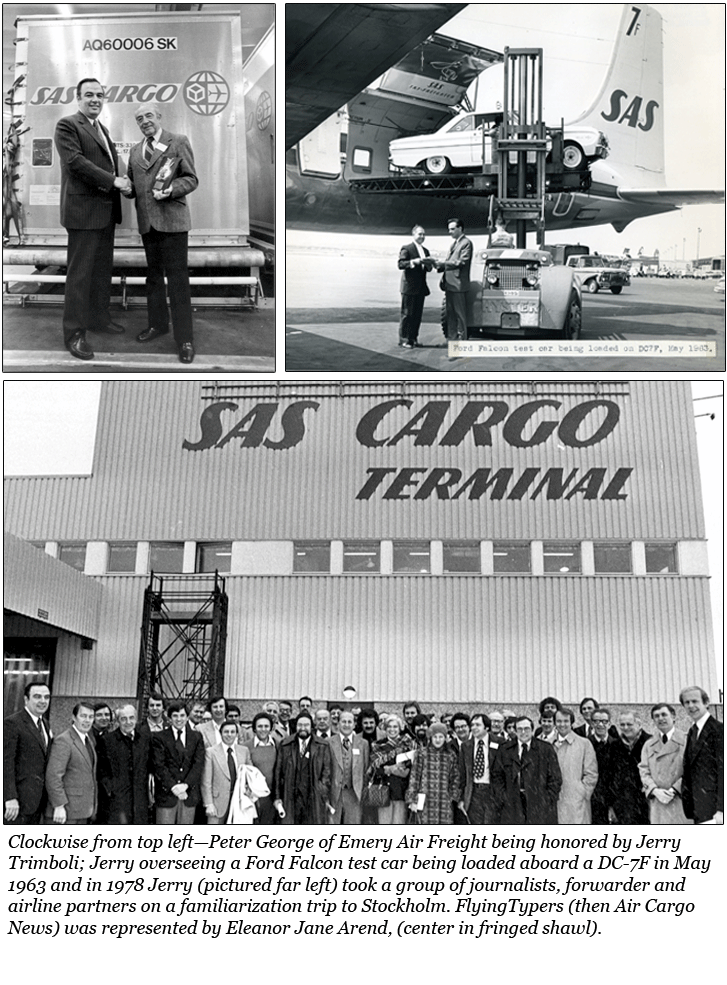 |
Today,
at age 81, dividing his time between homes in
New York and North Carolina, Jerome Trimboli
never abandoned his interest in air cargo during
his years of retirement. His awareness of industry
events and development are up to date and acute.
In private conversation he may recall an intricate
air freight operation, or quote a memorable
statement by a colleague. Could he name one
or more people who he credits for advancing
his own knowledge of the business? He had four
names on the tip of his lips: Anker Palvig,
SAS’s early cargo manager at Idlewild
Airport; John C. Emery, Jr., president, Emery
Air Freight; Charles L. Gallo, president, Air
Express International; and Bart Shaw, SAS’s
vice president–sales, North America.
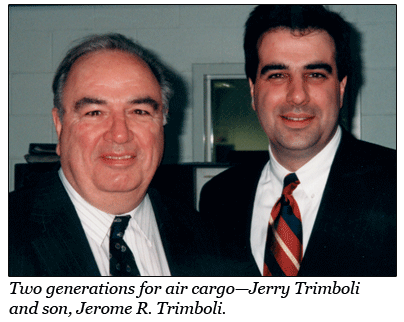 A native of Brooklyn
and a graduate of Brooklyn College, Trimboli
is married, with two daughters and a son (who
represents the family’s second generation
in the air cargo industry), and eight grandchildren.
Trained as a paratrooper during the Korean War
years, he turned up in Frankfurt where he was
assigned to the military police.
A native of Brooklyn
and a graduate of Brooklyn College, Trimboli
is married, with two daughters and a son (who
represents the family’s second generation
in the air cargo industry), and eight grandchildren.
Trained as a paratrooper during the Korean War
years, he turned up in Frankfurt where he was
assigned to the military police.
Just 60 years
ago there was the inevitable collision of Trimboli’s
separation from the U.S. Army and the need to
find a job. Air freight was the farthest from
his thoughts, but upon the advice of a friend,
he turned his footsteps toward Idlewild Airport
and wound up with employment at Scandinavian
Airlines System. The year was 1955, and he was
given the grand title of warehouseman. The following
year he shifted from wrestling with shipments
to the more palatable position of cargo agent.
This eventuated as a springboard to cargo sales
agent (1956-58) which directed the young man
to covering a unique sales territory—mid-Manhattan,
between the Hudson River and East River.
In 1958 there
was a brief interim as a licensed flight dispatcher
before Trimboli’s promotion to New York
district cargo sales manager, quickly followed
by appointment as airport cargo manager. Three
years of successful sales production lifted
him to head North American cargo sales. With
the passage of another year his title was revised
from “manager” to “director”
to reflect additional responsibilities. In 1982,
a large part of the transatlantic industry was
stunned to learn that Jerry Trimboli, the man
with the hearty laugh, had resigned from the
Scandinavian carrier. His reason was short and
simple: differences in air cargo service policy.
 In
the time his more than a quarter-century with
the airline (during which his managerial efforts
were mirrored in the President’s E for
Export Award), he had been a candid admirer
of the air freight forwarder and its role in
the global transportation universe. Thus, it
came as no surprise to learn from trade headlines
that Trimboli had assumed the office of chairman,
president, and CEO of Interjet Systems, Inc.,
a position he held for 16 years. This phase
of his career also included the presidency of
the Air Freight Forwarders Association. In
the time his more than a quarter-century with
the airline (during which his managerial efforts
were mirrored in the President’s E for
Export Award), he had been a candid admirer
of the air freight forwarder and its role in
the global transportation universe. Thus, it
came as no surprise to learn from trade headlines
that Trimboli had assumed the office of chairman,
president, and CEO of Interjet Systems, Inc.,
a position he held for 16 years. This phase
of his career also included the presidency of
the Air Freight Forwarders Association.
Trimboli was at
the height of his career at SAS when he was
credited with promotion and setting export records
for airborne Norwegian salmon. (The apparent
superiority of the product enticed Trimboli
to organize a small, privately-owned sales company,
purely a family operation.) His efforts, recognized
by the Norwegian government, won Trimboli that
country’s prestigious Export Award.
An intimate look
at Jerry Trimboli, a retired gentleman since
2006, finds him active as a painter with oils,
tackling weeds in his garden, and making up
time as an ardent reader of books.
He was a familiar
personality at industry meetings and conventions
here and abroad. Expressed in print, his views
on attitudinal pressures, business policy, competition,
and ethics have drawn spirited debate. Though
a retiree for nearly a decade, he has kept fully
abreast of industry affairs.
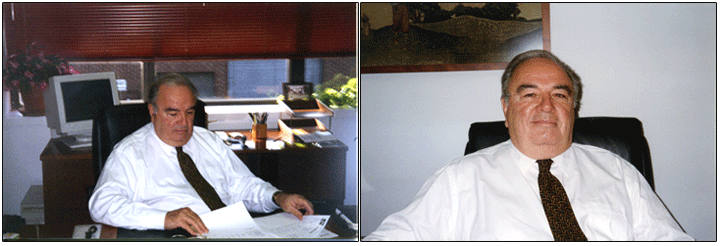 |
Among
the multitude of shipments he oversaw as an
airline cargo executive, there was one that
persistently stuck in Trimboli’s memory.
As near as he could remember, the year was 1961,
and there was an urgent call from Frederik Henjes
Co., an IATA cargo agency representing Union
Carbide. Could he rush a couple of thousand
kilos of Severin insecticide to Cairo? Even
though SAS operated no freighters then, the
answer to Henjes was yes. The shipment of drums,
each weighing 55 pounds, were loaded onto the
seats of a DC-8 passenger plane, each “a
perfect fit”. When the crew entered the
aircraft at the airport in New York, the captain
asked with a straight face whether there was
any room left in the cockpit.
Was his interest
in economics the result of his studies at Brooklyn
College? Surprisingly, Trimboli shook his head.
“No,”
he said. “I majored in economics in college,
but it was SAS where my majoring in economics
actually started.”
How so?
“Well, I
began to see the correlation between goods that
were shipped, and I saw it as the opportunity
to market goods in a quick and safe way.”
It was about that
time—the latter Fifties—that SAS
assigned him as its first cargo sales representative
on this side of the Atlantic, and one of the
few calling on commercial accounts of control
data—Hewlett Packard—Esso Standard
Pfizer ilk. For the most part, these air shipments
fell in the emergency category. Nevertheless,
he added, “It opened the door to an opportunity
to get them to understand the economics of shipping
by air.”
When I interjected
that conversion of the surface shipper was perhaps
the toughest task in air freight sales, Trimboli
stated:
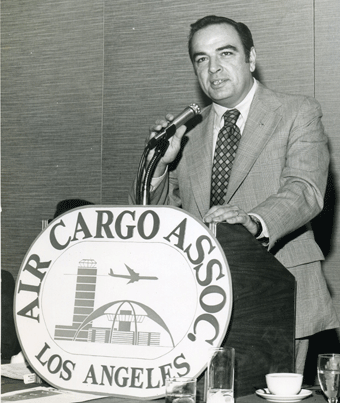 “Understand
that I was addressing traffic oldtimers. They
were all cut from the same piece of cloth. Theirs
was more or less one attitude: Don’t rock
the boat. I had no course other than to keep
talking about effects on distribution, on-time
performance, the marketplace, and inventory
control.”
“Understand
that I was addressing traffic oldtimers. They
were all cut from the same piece of cloth. Theirs
was more or less one attitude: Don’t rock
the boat. I had no course other than to keep
talking about effects on distribution, on-time
performance, the marketplace, and inventory
control.”
When I commented
that the industry’s drive covered years,
Trimboli indicated that in Germany “we
got our first break”. McDonald’s
admitted that it encountered problems in receiving
fresh lettuce from traditional suppliers. The
hamburger monarch needed quality performance,
safety, and price.
The airline was
successful in selling a procedure to shed the
lettuce and fly it out of Los Angeles on the
transpolar route.
“This was
a whole new market for us,” Trimboli commented.
Shifting to another agricultural product that
occurred to him, he went on to say, “I
recall developments and, especially airline-forwarder
issues.” In the latter respect, he was
buoyed by ongoing promotional action enveloping
forwarder and agent business interests during
his early SAS years. He decided this required
further explanation:
“You have
to bear in mind that I am speaking about the
state of airline-forwarder relations of a generation
ago. We didn’t consider the forwarder
to be just another industry body; we recognized
his potential value, and we set out to exploit
it. How did we go about doing it? We ran seminars,
we cooperated with educators, particularly with
associate professors at Columbia University,
in taking a realistic view of the how and why
of possible bumps in the airline-forwarders
relationship. Then we broke out with AFTD.”
“AFTD?”
“Yes, AFTD—the
Air Freight Decision Tool. It’s only in
distant memory today. But it did a great job
in slowly convincing the shipper not to look
skeptically at the air freight rate but at the
bottom line which provides the true economic
result.”
Asked how he,
as a manager with specific duties, fit into
this picture, he asserted that he inevitably
found himself delivering marketing messages
at minor and major hubs of education—college,
business school, trade associations, industrial
clubs. Unquestionably, AFTD was front and center
Trimboli’s “education tours”.
It may not be
readily apparent, but air travel is at the heart
of an air cargo executive. That heart beat strongly
during the length of Trimboli’s airline
career. Put to the question of how many air
miles he logged in the course of performing
his duties in accordance with his 27-year SAS
career, he was momentarily stumped. Then, after
a period of mental gymnastics, he conceded the
inability to come up with a figure.
“But I can
tell you this,” he added. “Every
two weeks I was on the go from New York to Canada,
Los Angeles, Seattle, Chicago, Boston, and cities
in Florida and Texas. International flights?
My passbook tells me that I made 400 transatlantic
crossings to Scandinavian countries.”
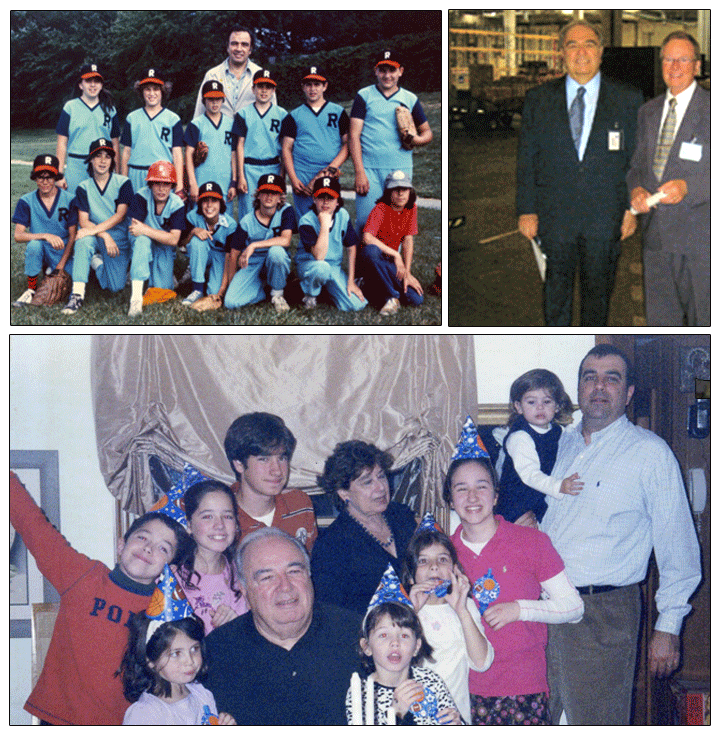 |
All
told, Jerry Trimboli has spent two years short
of a half-century in direct and indirect air
cargo transportation. The road to ultimate retirement
has been a long one—sometimes joyful,
sometimes a grief. Twice
during his years of service, SAS found it necessary
to withdraw the freighter from the U.S.–Scandinavia
run, and Trimboli swallowed hard. Otherwise,
in leisurely, informal chats, he might disclose
his pride in having successfully headed the
JFK Cargo Terminal building in 1972. Then there
was that victory when he employed AFTD to convert
McDonnell Douglas to systemwide freight traffic
for his company; and developed IBM’s new
distribution center at Kastrup Airport. There
were additional operational and marketing victories,
but space requirements consign them to the silent
record.
Jerry Trimboli
heaved a long sigh. The road to achievement
and contentment had been a long one, but he
felt the warm grip of good fortune in having
exchanged a ballfield for an airfield.
Richard
Malkin
 |
malkin101@aircargonews.com |








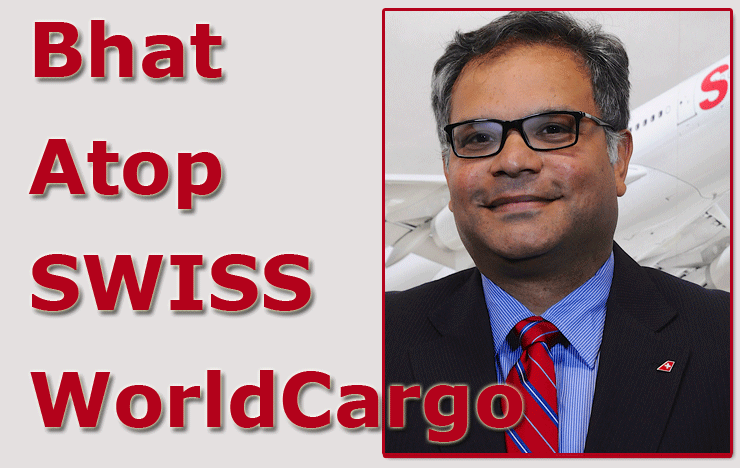
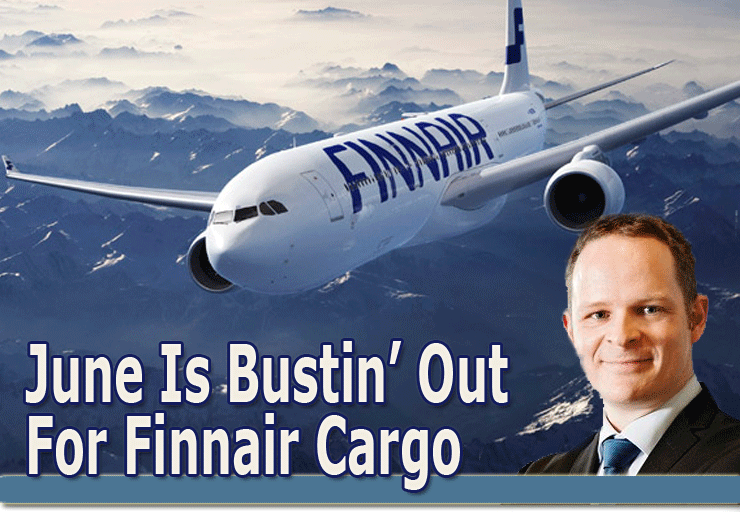
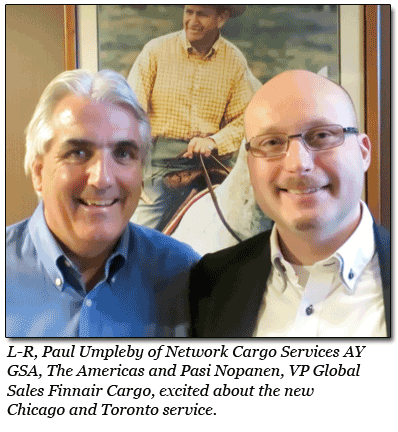 Finnair Cargo
reports that its second freighter hub at Brussels
Airport has strengthened its global cargo offering
and boosted efficient and fast transcontinental
cargo flows (Asia–Europe–America).
Finnair Cargo
reports that its second freighter hub at Brussels
Airport has strengthened its global cargo offering
and boosted efficient and fast transcontinental
cargo flows (Asia–Europe–America).
 But despite visions
of baseball glory (and fat checks), the Vergilian
counsel that the Fates would lay down the right
path to the future held true to Trimboli’s
career. Destiny is unshakeable. Thus, in time,
he was to exchange a bat and glove for a highly
visible role in the booming new international
air cargo industry. His was a calm, consistent,
well-reasoned industry voice, not always in
step with IATA ideology.
But despite visions
of baseball glory (and fat checks), the Vergilian
counsel that the Fates would lay down the right
path to the future held true to Trimboli’s
career. Destiny is unshakeable. Thus, in time,
he was to exchange a bat and glove for a highly
visible role in the booming new international
air cargo industry. His was a calm, consistent,
well-reasoned industry voice, not always in
step with IATA ideology.
 A native of Brooklyn
and a graduate of Brooklyn College, Trimboli
is married, with two daughters and a son (who
represents the family’s second generation
in the air cargo industry), and eight grandchildren.
Trained as a paratrooper during the Korean War
years, he turned up in Frankfurt where he was
assigned to the military police.
A native of Brooklyn
and a graduate of Brooklyn College, Trimboli
is married, with two daughters and a son (who
represents the family’s second generation
in the air cargo industry), and eight grandchildren.
Trained as a paratrooper during the Korean War
years, he turned up in Frankfurt where he was
assigned to the military police. In
the time his more than a quarter-century with
the airline (during which his managerial efforts
were mirrored in the President’s E for
Export Award), he had been a candid admirer
of the air freight forwarder and its role in
the global transportation universe. Thus, it
came as no surprise to learn from trade headlines
that Trimboli had assumed the office of chairman,
president, and CEO of Interjet Systems, Inc.,
a position he held for 16 years. This phase
of his career also included the presidency of
the Air Freight Forwarders Association.
In
the time his more than a quarter-century with
the airline (during which his managerial efforts
were mirrored in the President’s E for
Export Award), he had been a candid admirer
of the air freight forwarder and its role in
the global transportation universe. Thus, it
came as no surprise to learn from trade headlines
that Trimboli had assumed the office of chairman,
president, and CEO of Interjet Systems, Inc.,
a position he held for 16 years. This phase
of his career also included the presidency of
the Air Freight Forwarders Association. 
 “Understand
that I was addressing traffic oldtimers. They
were all cut from the same piece of cloth. Theirs
was more or less one attitude: Don’t rock
the boat. I had no course other than to keep
talking about effects on distribution, on-time
performance, the marketplace, and inventory
control.”
“Understand
that I was addressing traffic oldtimers. They
were all cut from the same piece of cloth. Theirs
was more or less one attitude: Don’t rock
the boat. I had no course other than to keep
talking about effects on distribution, on-time
performance, the marketplace, and inventory
control.”




